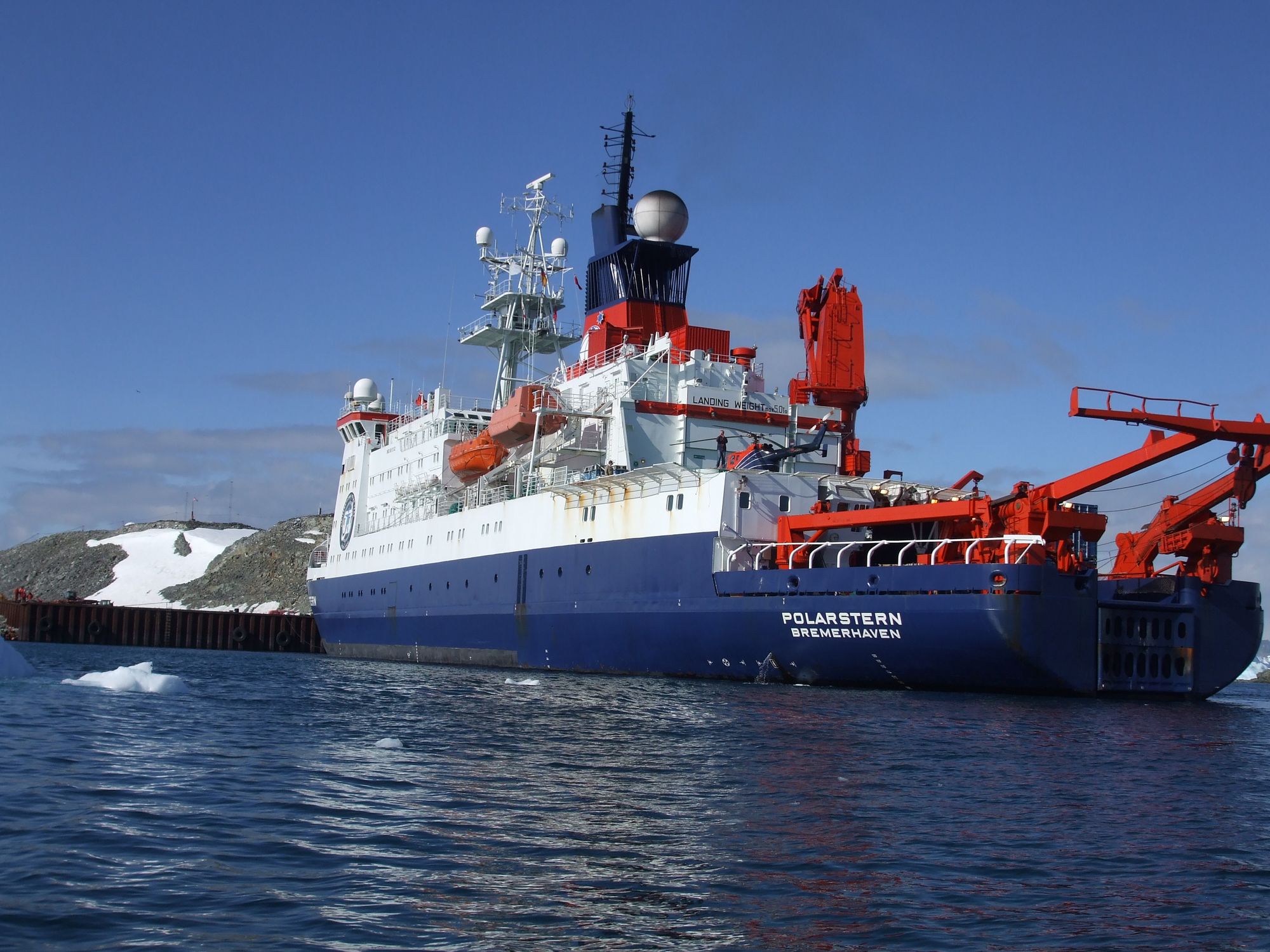Polarstern

The polar research vessel „FS Polarstern“ of the Alfred Wegener Institute (AWI), Helmholtz Centre for Polar and Marine Research is an ice-breaker, which plies the seas both in the Arctic and the Antarctic. The operation schedule of the ship during a year generally consists of different cruise legs of a journey both to the Arctic and to the Antarctic. This means that the ship regularly crosses the Atlantic Ocean (north, tropical, south), from its port of registry Bremerhaven to the Antarctic and back. Likewise the ship sails the northern North Atlantic Ocean and northern seas (including the North Sea) on its way to the Arctic and back to Bremerhaven. Since 2007, the "Polarstern" has equipment on board which conducts measurements of the partial pressure of CO2 (pCO2) from the sailing ship. The ship is thus utilized as a mobile platform for oceanic (and atmospheric) measurements in the surface layer in the sense of a "Voluntary Observing Ship" (VOS). The "Polarstern" is at sea for more than 300 days per year. All collected data by "Polarstern" have been part of a world-wide, long-term measuring campaign called SOCAT (Surface Ocean Carbon Atlas) involving numerous laboratories. The results from this project have been and will be contributing to enhance the knowledge of the role of the oceans in the global carbon cycle. Due to the restricted accessibility of the polar regions, the data coverage is relatively bad compared to other oceanic provinces; for this reason, amongst other things, the "Polarstern" data will make a very important and significant contribution to the global data base on the carbon cycle. This is evidenced by the yearly publications of the Global Carbon Budget in the journal Earth System Science Data, to which the pCO2 data collected by "Polarstern" have contributed. Since there are several longtime projects at the Alfred Wegener Institute, for which repeatedly work has to be carried out in the same regions or along the same sailing routes, we will also collect pCO2 data from those same oceanic regions, enabling some kind of time series for investigating the variability and changes in those areas. Regions involved include those near the German Neumayer III station, near the Carlini Station with the Dallmann laboratory on King George Island in the Antarctic and the deep-sea longtime observatory HAUSGARTEN in the Fram Strait between Greenland and Spitsbergen. For better interpretation of the CO2 data, additional relevant parameters are measured, such as salinity, sea surface temperature and the oxygen concentration in the surface ocean.